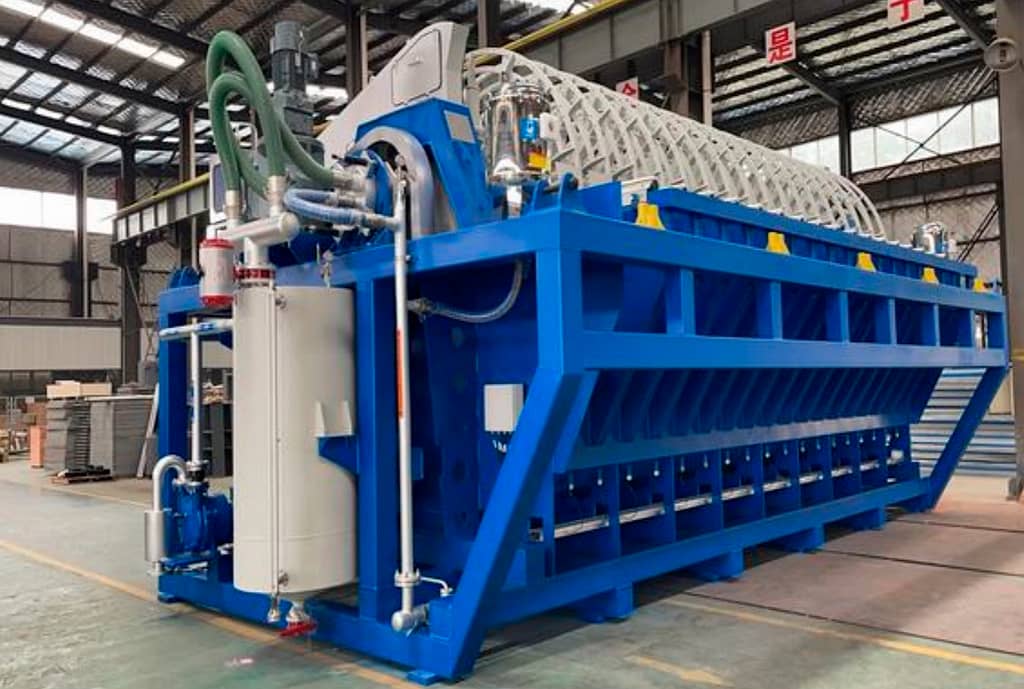
Vacuum Ceramic Filter Characteristics Parameters
The most important operating parameters of disc filters are the height of the slurry tank, agitation and the intensity and rotation speed of the disc as these will determine the cake formation and drying times.
It is important to continuously agitate the slurry in order to prevent sedimentation of the solids. Excessively high agitation intensity may affect cake formation or change the particle size distribution of the product.
One of the most commonly used agitators for filtration using vacuum disc filters is an oscillating cradle-type agitator located in the bottom of the basin, which requires fairly high rotation speeds to form homogeneous slurry. For processing rapidly settling high concentration slurries, bottom-feed rotary disc filters are usually used.
Stage 1: Filtration
During the filtration stage, the low vacuum applied to the filter removes the filtrate from the internal passageways of the discs. The slight pressure difference across the disc facilitates cake formation. As the cake thickens in this phase, more efficient washing is possible with increased wash liquor flows. However, this results in higher air consumption during discharge due to decreased resistance and slightly lower cake moisture content.
Stage 2: Dewatering
In certain instances, washing has proven highly effective in ceramic disc filters, thanks to the uniform structure of the formed cakes, the consistent flow profile of the ceramic filter media, and the gas-free filtrate flow. Thicker cakes formed during filtration, coupled with a higher vacuum level, enhance the removal of solute.
Stage 3: Discharge
The standard scraper performs adequately for relatively thick and non-sticky cakes. These cakes are discharged by blades or wire scrapers located on both sides of the discs. Nevertheless, for sticky or thin cakes, alternative agitators should be considered and installed. When wetter cakes are discharged from the disc filter, an air blow-back system is often used to facilitate cake removal.
Contact us for more details about supplier and supply chain information
